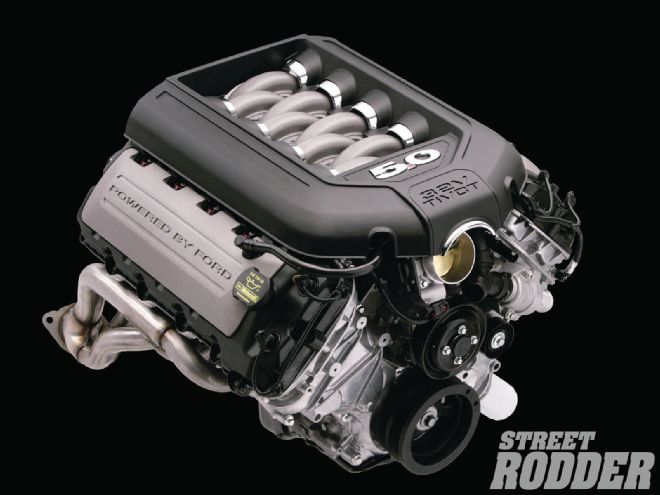
Unlike most activities that fall under the motorsports heading, street rodding doesn’t have a rulebook to follow; there are no clearly defined regulations. About the time our hobby seems to be growing in one direction it branches off in another. From our vantage point that’s what keeps it interesting and why it continues to grow. Case in point—it wasn’t all that long ago that one of street rodding’s new directions was putting a Ford engine in a Ford, evidently a Bow Tie powerplant in place of one wearing a Blue Oval had run its course with some. So, despite the fact that the venerable GM small-block V-8 fit an early Ford like it was made to replace a Flathead, in an effort to be different more and more builders began to put Fords in Fords, but there may be a change in how that is done as well.
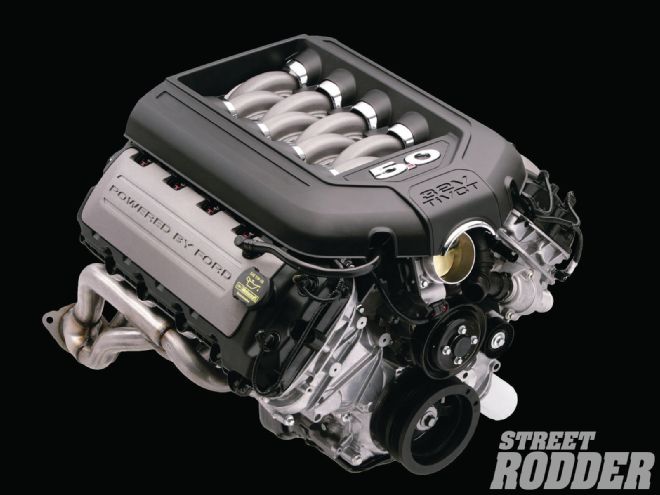 If you’re looking for the latest in technology to put under the hood of a street rod here it is: Ford’s new 5.0L Ti-VCT.
If you’re looking for the latest in technology to put under the hood of a street rod here it is: Ford’s new 5.0L Ti-VCT.
A number of years ago we did a series called the 5.0/’41 and showed what it took to put a small-block Ford in an early Ford chassis. The lesson we learned was simple enough; there was a real good reason to use a Chevy. In most cases the Ford’s oil pan created clearance problems, which often required either crossmember or firewall modifications; a remote oil filter was usually necessary and connecting the steering shaft to the rack-and-pinion on an IRS could require two hands full of U-joints; finally a late-style OEM front cover and pulley combination, or an aftermarket compact front drive system was needed to reduce the engine’s overall length. In short it took some extra effort to put a Ford in a Ford, but for many Street Rodders being different was worth it.
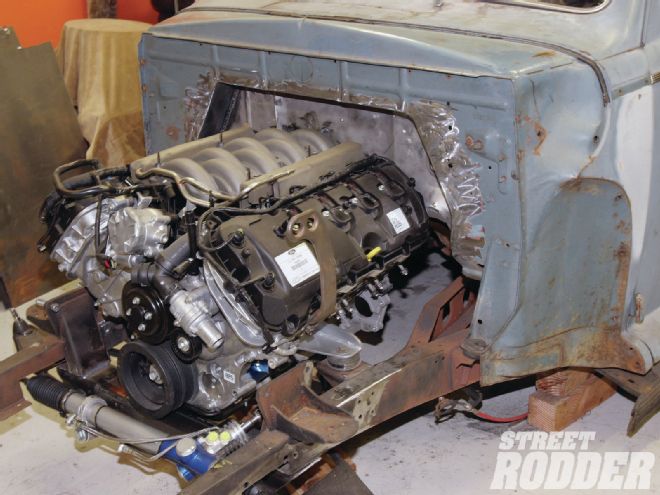 It took some work, but we installed a 5.0L Ti-VCT, aka a Coyote, where a pushrod 302 once resided.
It took some work, but we installed a 5.0L Ti-VCT, aka a Coyote, where a pushrod 302 once resided.
When Ford introduced the new 302 Coyote V-8 engine or the 5.0L Ti-VCT to use their nomenclature, we were impressed at the technology it represented. The all-aluminum V-8 produces 412 hp at 6,500 rpm and 390 lb-ft of torque at 4,250 rpm and in the new Mustang it is rated at 17/26 mpg city/highway with a six-speed manual and 18/25 with the automatic. Everything about the new engine was appealing but our first thought was the lack of availability would mean it would be some time until one showed up in a street rod. However it seems that what we’re up to hasn’t escaped the notice of corporate America and more than a few folks at Ford have taken exception to the competition’s engines, showing up in their cars no matter how long ago they came down the assembly line. As a result Ford Racing Performance Parts has included the Coyote in their crate motor program as we outlined in the May issue of SRM. With the availability issue of the new engines resolved our next question was, “What’s involved in getting a Coyote into an early Ford engine compartment?” To answer that question we dug out the same ’41 that once housed a Windsor-based 302. Like many projects, once we were done with the Ford in a Ford series the 5.0/’41 was shoved to the side and has sat neglected while we turned our attention elsewhere.
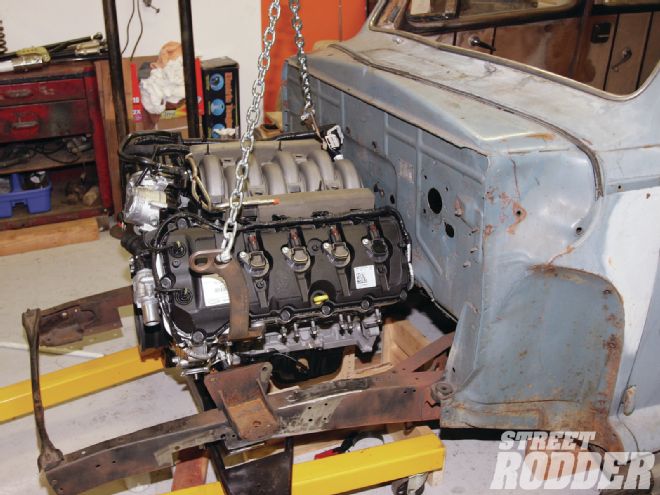 The initial test-fit was a little disappointing; to get the engine down and to the rear where it should be was going to require firewall surgery.
The initial test-fit was a little disappointing; to get the engine down and to the rear where it should be was going to require firewall surgery.
At first glance, installing the new 5.0L Ti-VCT looked like it would be a challenge, and the truth is it did require a few nips and tucks, like notching the Fatman front crossmember, recessing the firewall, and installing a remote oil filter adapter. Certainly there will be some extra effort involved in shoehorning one of these engines into a fat Ford engine compartment when compared with other options, but the benefits of an all-alloy four-cam V-8 with the latest technology will be worth it when it’s done. And it will definitely be different.
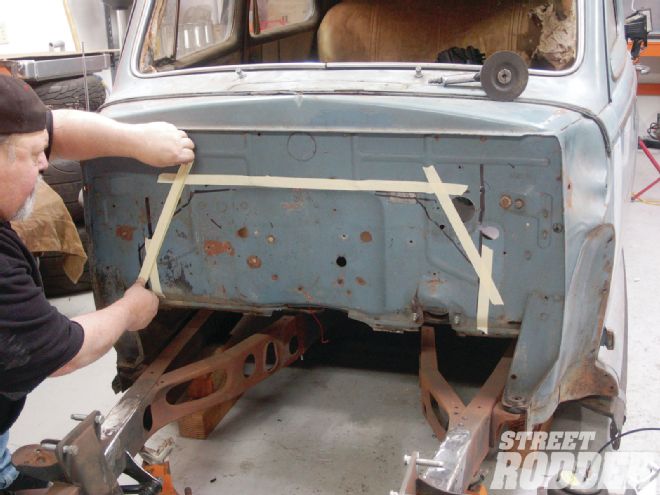 Rather than replace the entire firewall we elected to recess the portion directly behind the engine.
Rather than replace the entire firewall we elected to recess the portion directly behind the engine.
We fabricated these motor mounts from flat steel plate. Note they are different side for side (the larger plate bolts to the right side of the engine). The rubber cushions are early Ford V-8 style from Speedway Motors (PN 720-9314).